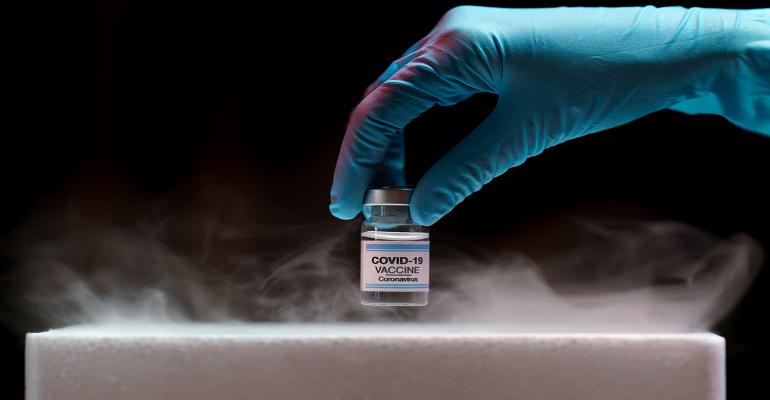As news continues to break about successful late-stage COVID-19 vaccine trials, people around the world are gaining hope that the days of lockdowns, social distancing and mask-wearing will eventually be in the rear-view mirror. Yet, optimism that we can put an end to this pandemic when a vaccine hits the market is challenged by the extreme temperature sensitivity and variability of ultra-frozen, frozen, and refrigerated formulations alike.
Distribution challenges being discussed in the public domain (and behind closed doors) distill down to this problem statement:
We must get the COVID-19 vaccine distributed in mass as quickly as possible without breaking the cold chain. More importantly, we (manufacturers, distributors, government officials, healthcare practitioners, vaccine administrators, advocates and recipients) must be confident that the proper (variable) temperature has been sustained through the last mile so that we can be certain at the moment of injection that a viable dose has not been compromised by heat exposure.
So, while most conversations right now seem focused on dissecting the logistical complexity faced by vaccine transporters and central distribution centres, I am most concerned about what is going to happen in that last mile – and you should be too.
We know that temperature excursions could occur during vaccine distribution. But what we really need to know is whether or not they actually do.
While vaccine manufacturers, distributors, government leaders and even non-governmental organisations (NGO) think about what it is going to take to keep temperature-sensitive vaccines stable in transit, equal consideration must be given to how we’re going to keep doses from being thrown away unnecessarily.
In developed regions, such as North America, Europe and Australia, temperature loggers are generally used to monitor cold chain pallets and packages. Vial-level temperature indicators aren't required on individual vaccine units in these areas like they are in Africa, Eastern Europe, India, and other parts of Asia. So, people handling COVID-19 vaccines after those larger units are broken down, delivered to administration sites and then further dispersed for storage or use have no way of knowing if the vaccine has been compromised due to heat exposure.
If you ask me, that’s the real problem that needs to be addressed in the current COVID-19 vaccine distribution strategy.
If even a single dose "feels warm" to the touch or someone thinks it was "probably sitting out too long," there’s a very good chance that the vial is going to be tossed out of an abundance of caution. Those who are extremely risk averse may even decide to throw out the whole batch, assuming it may have been heat compromised. Remember, it may or may not be a licensed healthcare practitioner making these decisions. In many places, volunteers are going to be recruited and trained exclusively to support the COVID-19 vaccination efforts. People don’t want to inadvertently inject someone with a vaccine that may not be effective because it has been exposed to potentially damaging heat during transport and/or storage.
That’s why every person who touches a vaccine vial after production and through administration must be able to determine if heat exposure has occurred before that point in time. Here’s how:
- When a pallet or package-level temperature logger indicates an excursion, someone should be able to break open that larger unit to confirm if all individual units have been affected and should be taken out of distribution or if it was just the top layer that got too warm because of direct heat exposure during loading and unloading. This is not possible unless every individual vial has a temperature indicator on it.
- As the vaccine is being unloaded at the administration site, teams should be able to confirm if the dry ice and other proposed transport cooling methods worked or if replacement doses need to be ordered immediately to avoid prolonged delays in community vaccination.
- When the vaccine is removed from storage containers, and again as it is being prepped, everyone – from the site supervisor to the vaccine administrator and even the patient – should know with confidence that the cold chain was successfully maintained at every touchpoint.
If the decision is ultimately made to throw away some units – amounting to financial waste, a duplicated resource burden and delay in achieving mass vaccination – then we can at least be certain that such action was the result of a confirmed heat excursion, not someone’s “best judgement.”
The key takeaway
If we want to preserve our limited resources and earn the public’s trust in our ability to maintain the COVID-19 vaccine cold chain all the way through the last mile, then we must commit to putting small, cost-effective vaccine vial monitors on each individual vial in the first mile.

Tony Cecchin

